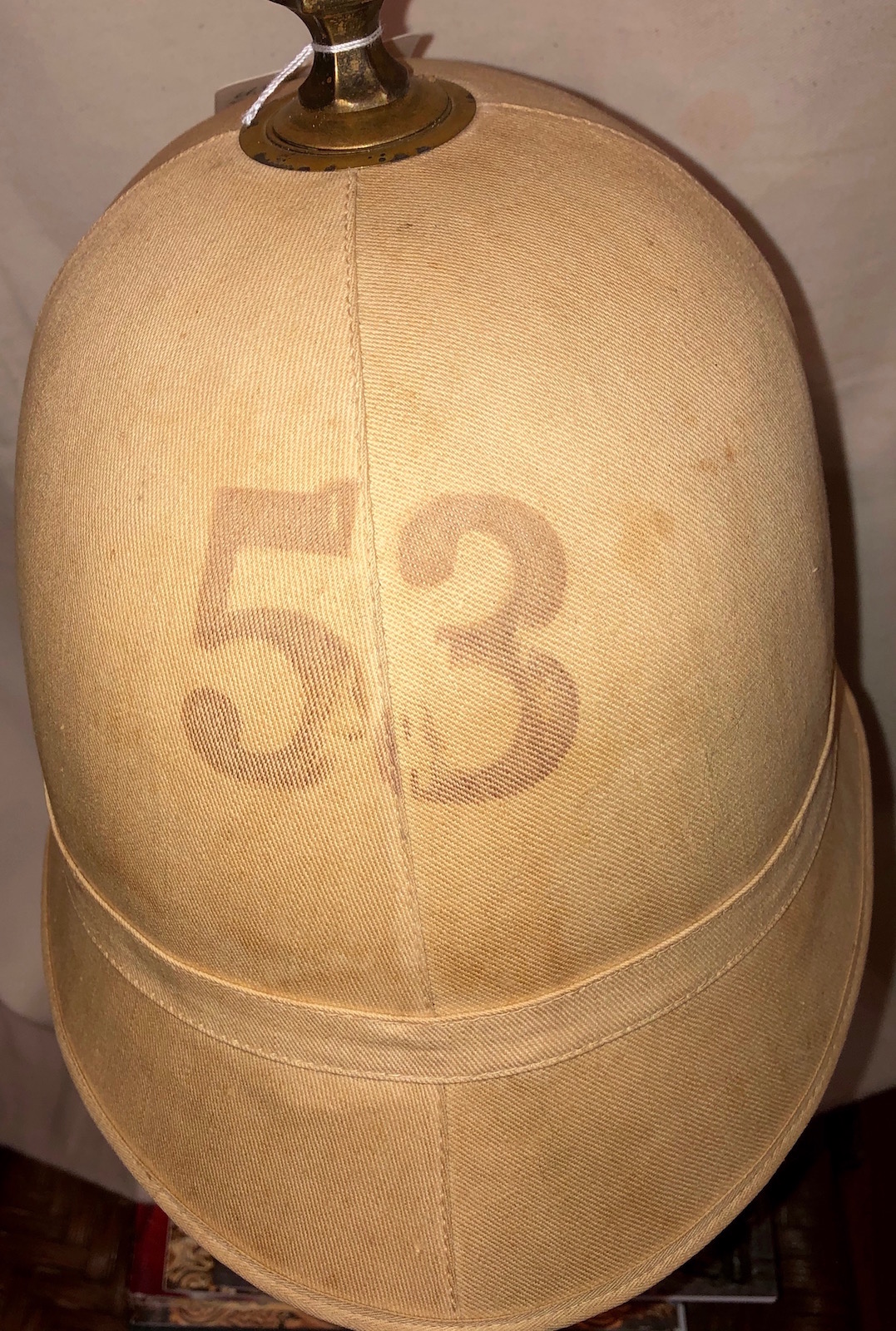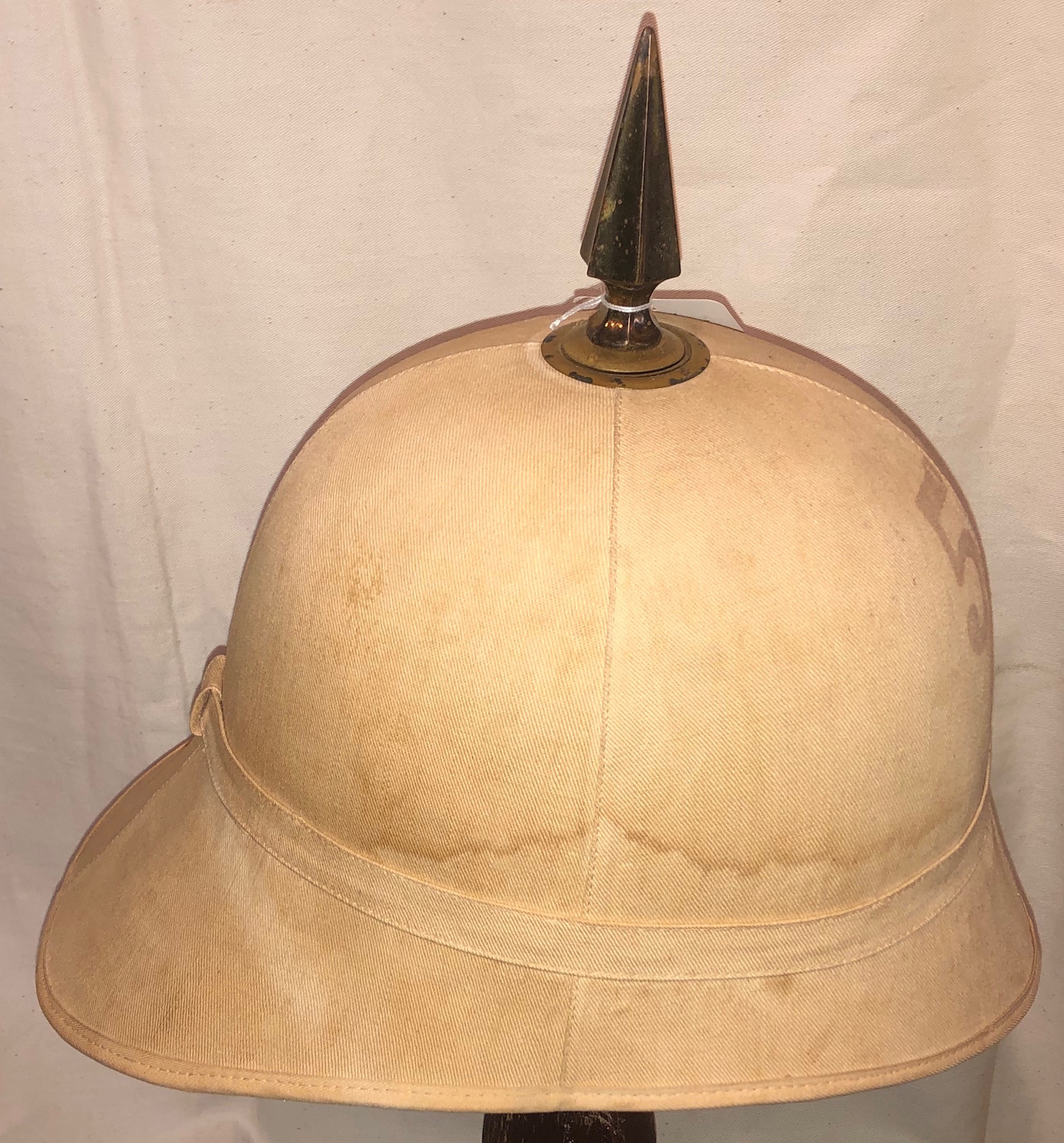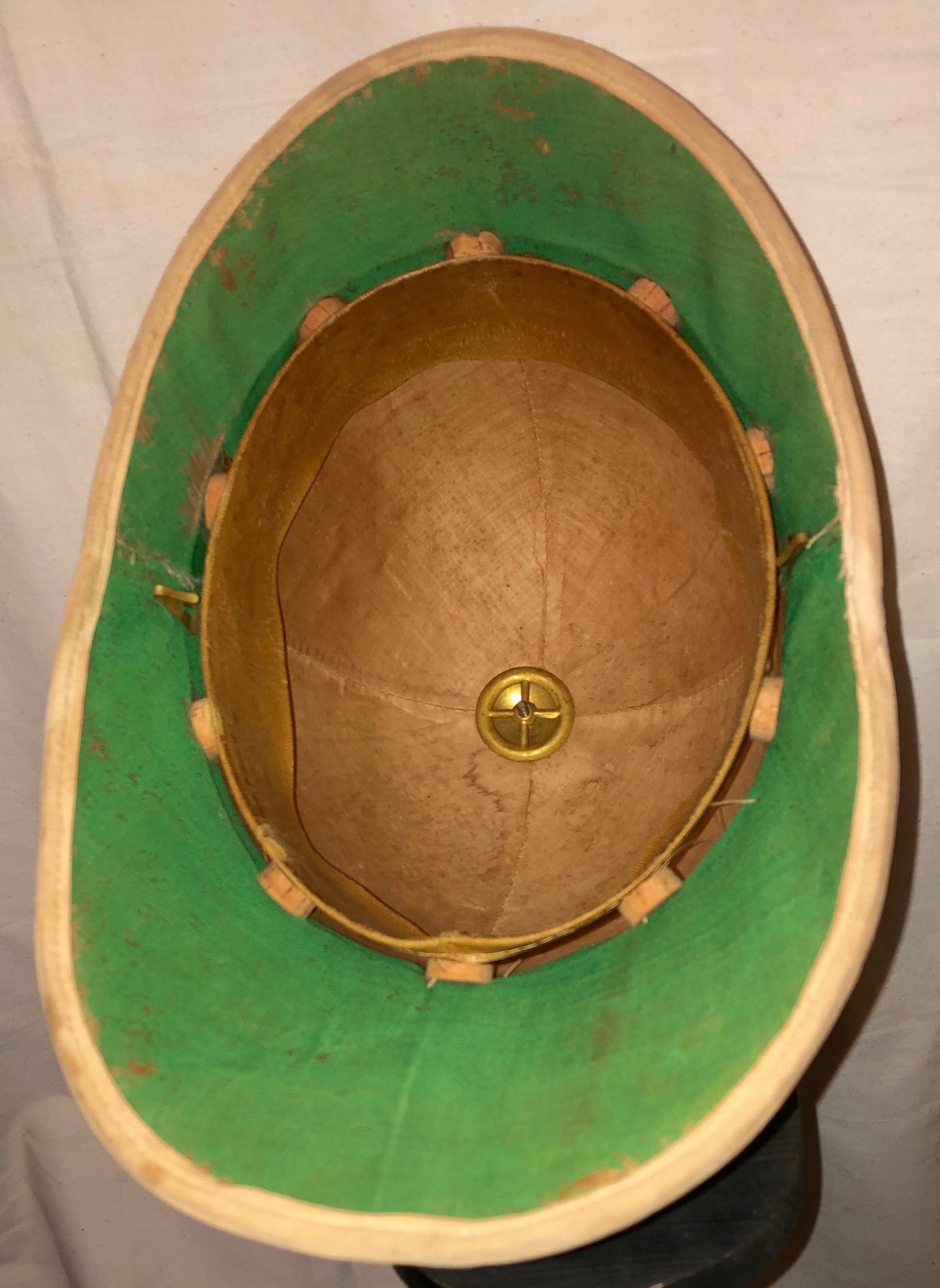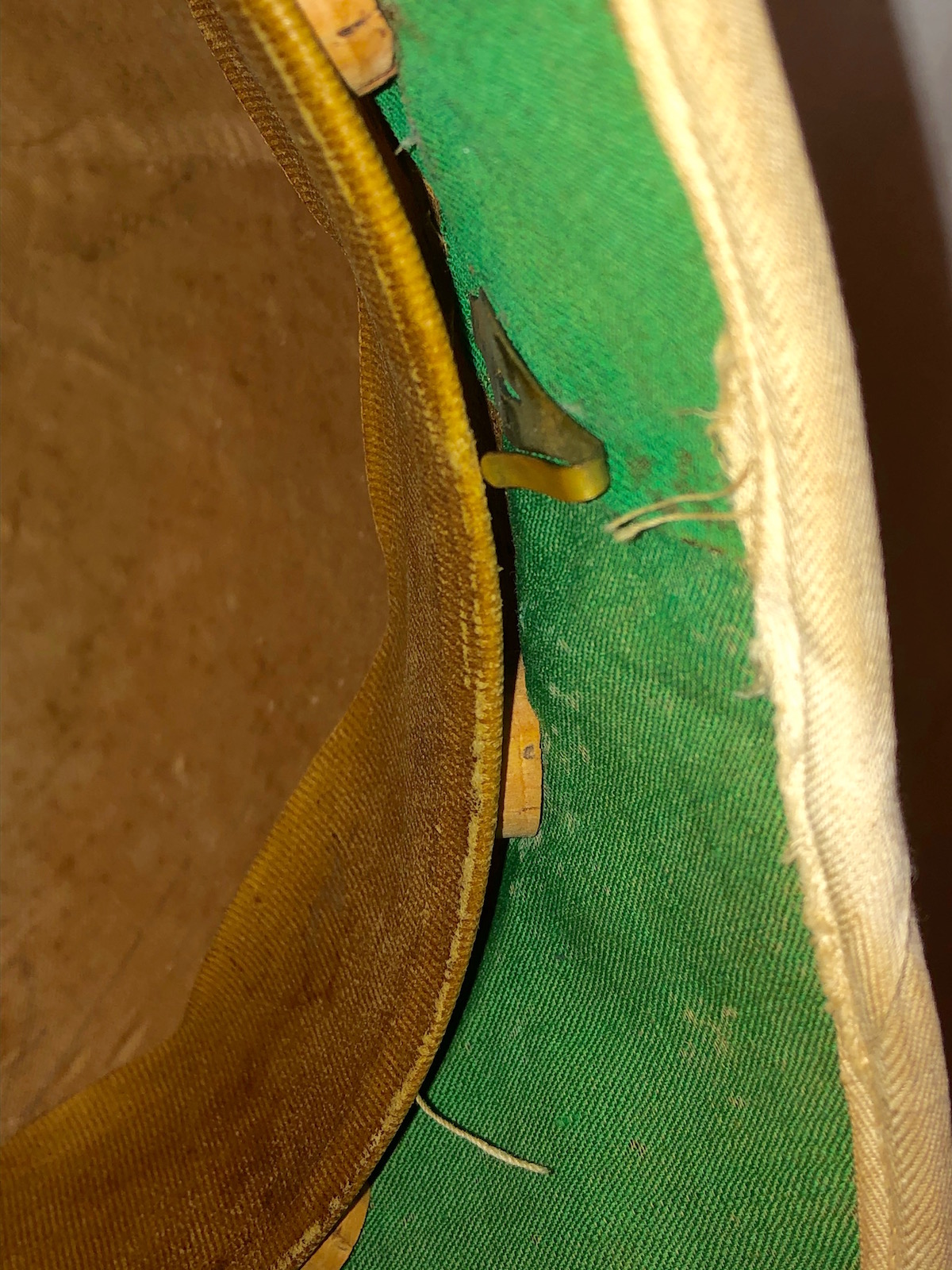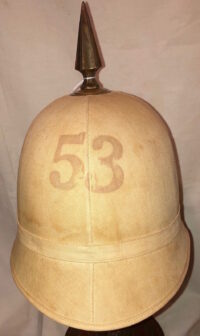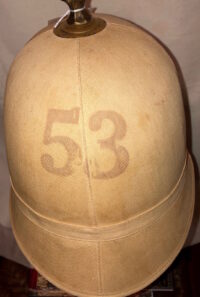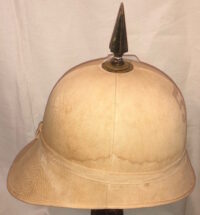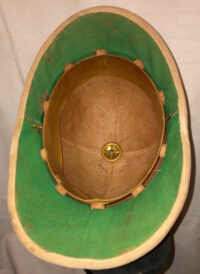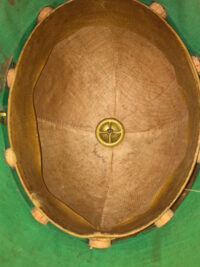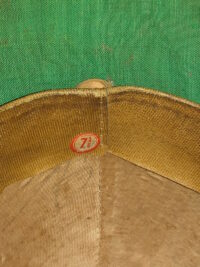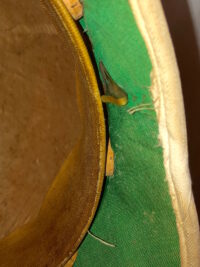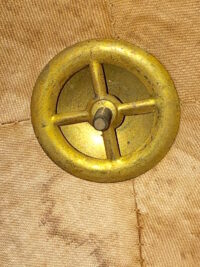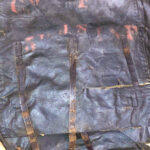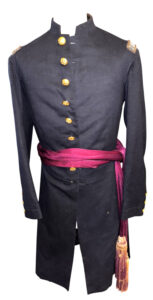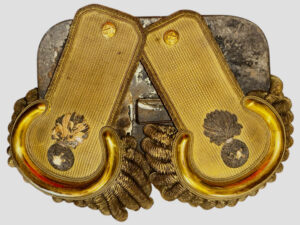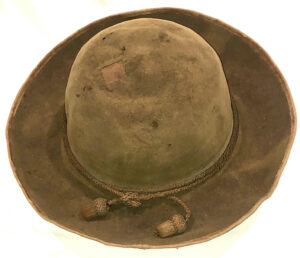U.S. Army C. 1881-1902 Pith or Sun Helmet
$325
U.S. Army C. 1881-1902 Pith or Sun Helmet – Fine condition late 19th century, U.S. Army issue “sun helmet”, in overall fine condition. This style of headgear, disliked by the regular army soldiers, was initially issued in a stark white iteration, which is now rather rare; more commonly found today is the type depicted here – the so-called M1889, cork helmet, covered in a tan cotton. This example retains its original spike, which had actually fallen out of favor, in the period; it has a regimental number “53” stenciled on the exterior front of the helmet. The interior of the helmet is in excellent condition, retaining a red silk attachment to the leather sweatband. These helmets were a four panel, cork construction, covered with a tan cotton drill. Use of these ended around the onset of the second decade of the 20th century. In a highly informative article, by Peter Suciu, that provides a historical overview of the advent and use of these helmets, the author relates that as the U.S., in the latter half of the 19th century began a more intense, westward expansion, newly adapted uniform styles, were influenced by European military entities. While the Civil War saw U.S. uniforms greatly influenced by France’s military, following the Franco-Prussian war, this European influence upon U.S. military attire, shifted towards a Prussian influence. Indeed, numerous American military units adopted spiked or plumed helmets, highly influenced by the German “Pickelhaube”. Summer months of military service brought other options to include helmets comparable to British summer, so-called pith helmets. In the early 1870s, Quartermaster General Montgomery C. Meigs actually contacted the British government to procure cloth-covered, “sun” helmets; in the end though, although the British provided a small number of their helmets, the vast majority of U.S. Army “sun” helmets were actually made by U.S. contractors. The first of this type issued, went into U.S. Army service in 1880; few of these early helmets remain; the more commonly occurring helmets seen today are examples of the M1887, which was produced with a bleached, cotton drill covering and the later M1889 cork helmet, which, like the one offered here, was covered with a tan cloth. As mentioned, hated by U.S. soldiers, these helmets did see service in the Spanish-American war. By the outbreak of WWI, these helmets were no longer issued, seeing their last use in China, around 1912.


